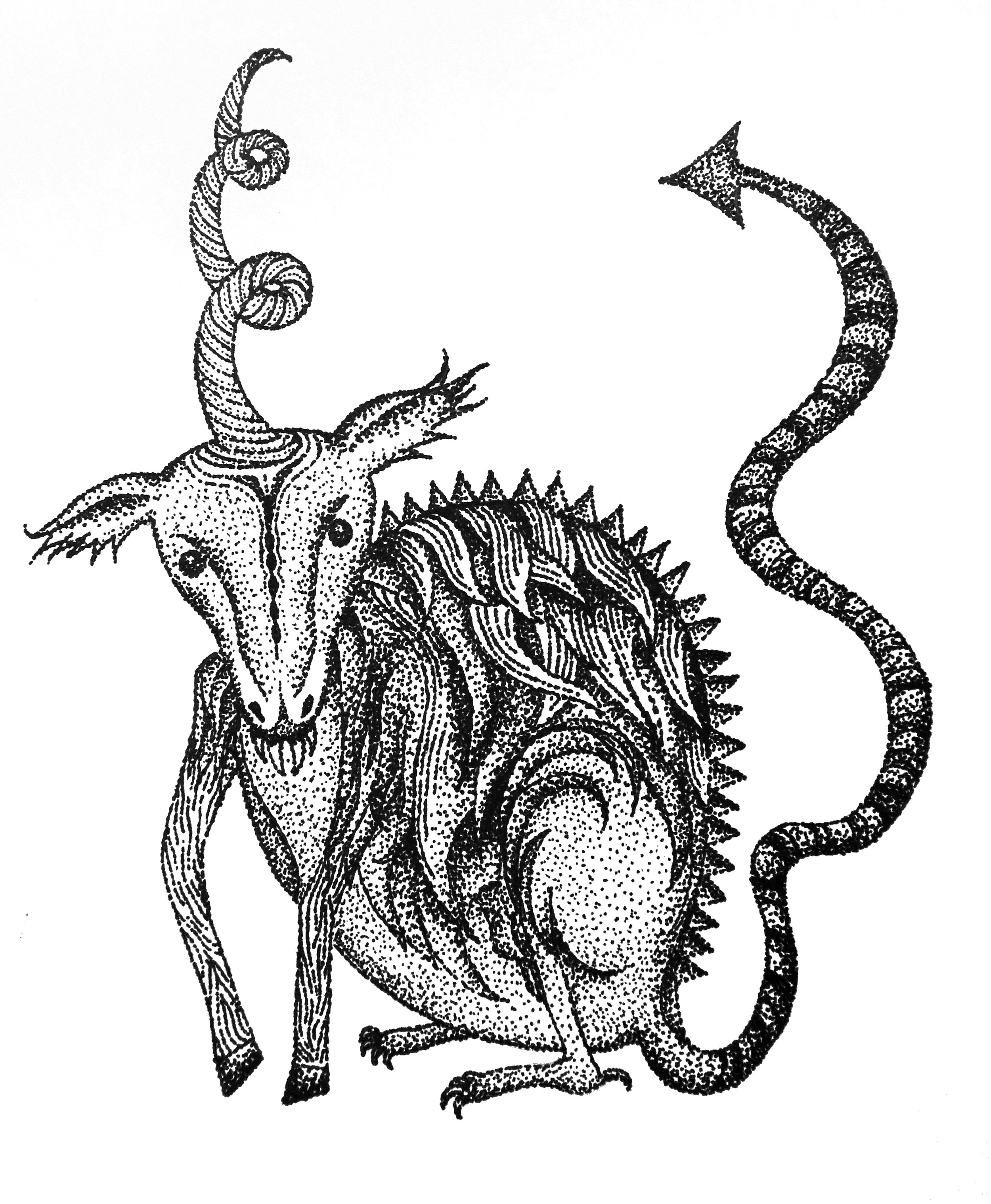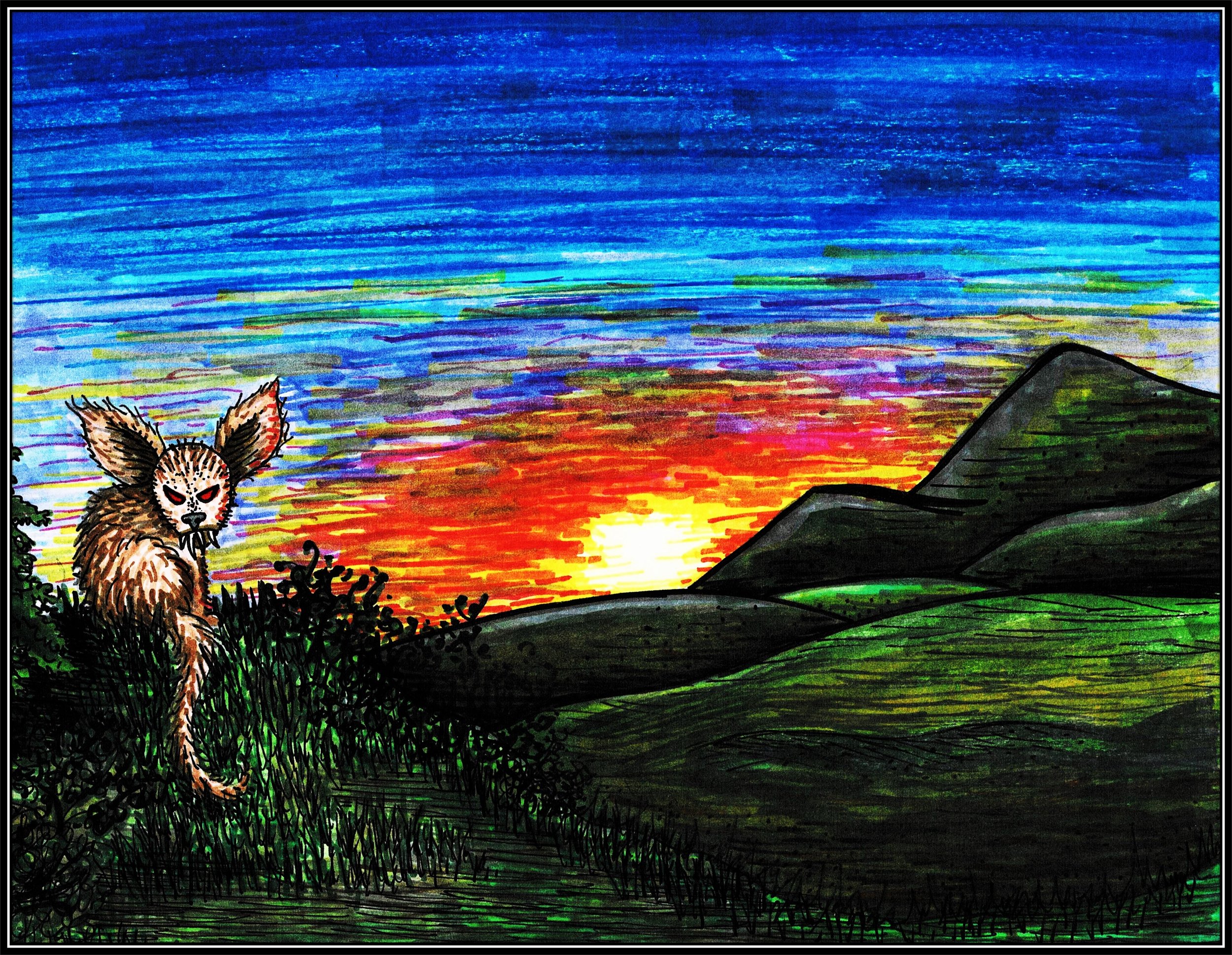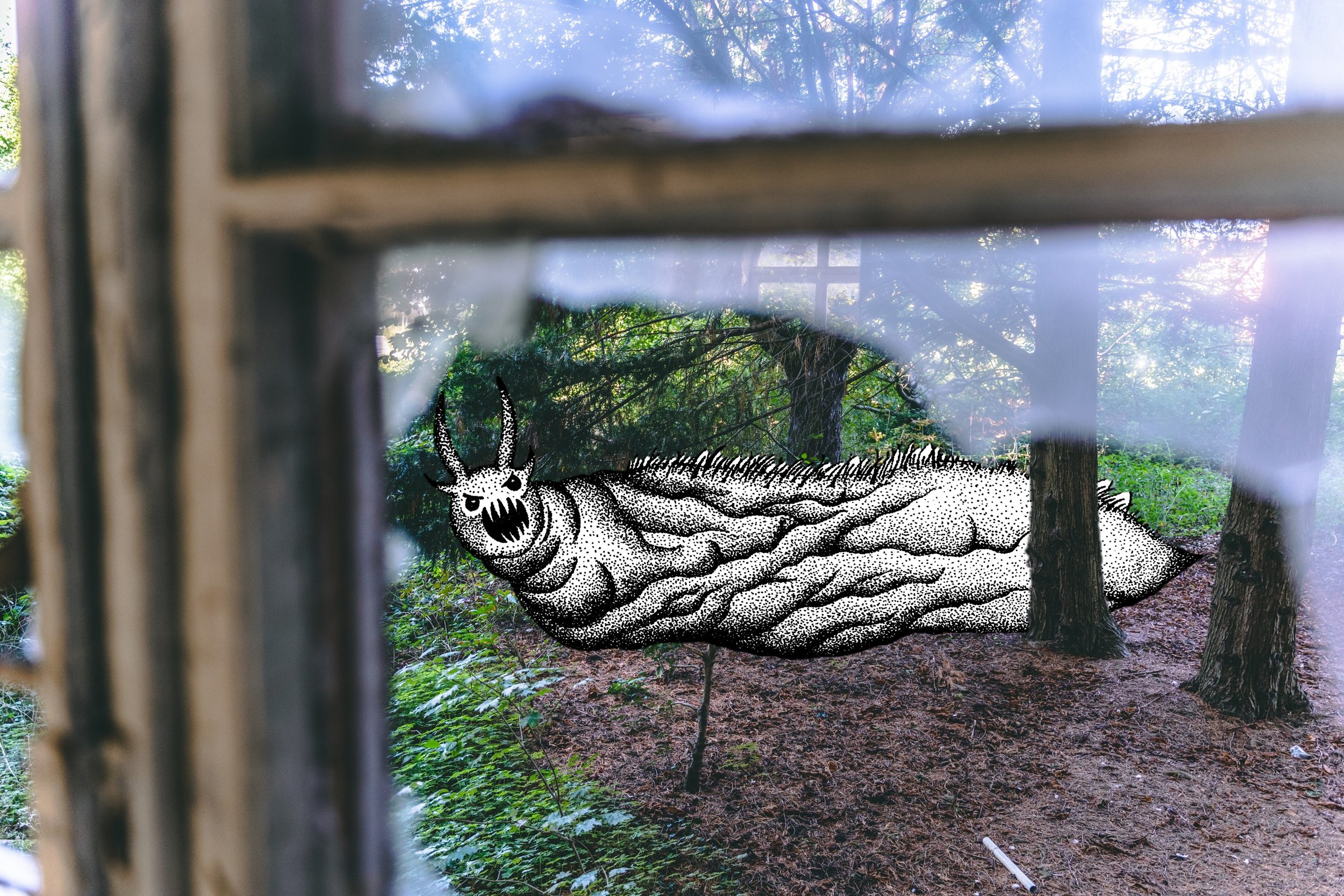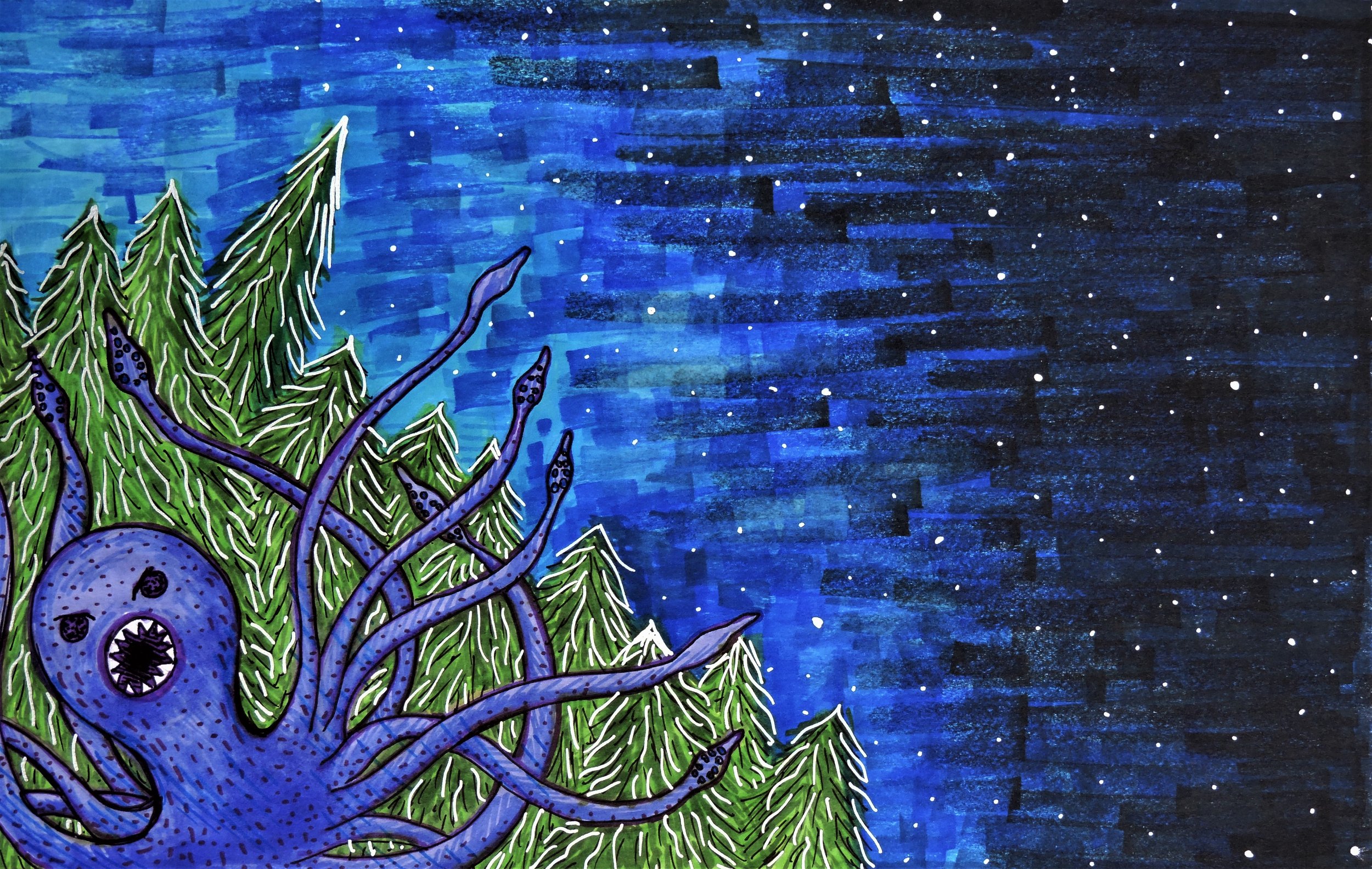Welcome to part 2 of my monster compendium!
I’ve been doing monster drawings for years now, correlated with the monsters in the Land of Szornyek series.
You can click here for Part 1: Tentacles and Teeth.
Lecui
The lecui is a quiet, unobtrusive monster, who can adapt their physiology to any environment. Their key characteristic? Their blood, when properly prepared, can act as a healing agent for humans. The key thing to note is that if you leave them alone, they’ll leave you alone.
Koponya
Koponyas are the vigilantes of the monster world. They have a sense of justice that aligns with their own moral code, and they will do anything in their power to see that justice is served. The problem, of course, is when their sense of justice doesn’t align with yours. They also have a fog they can manipulate that controls the minds of people and monsters alike. Your best bet is to avoid them, and try not to do anything that will piss them off.
Bogar
Bogars are mean AF. They are massive bug-like creatures with a metallic exoskeleton. They’re impervious to pretty much anything except rain and water, and even that takes time to wear them down. They’re filled with miniature versions of themselves that will run out and find food, fix up damaged spots, etc. They are fast, hungry, and vicious. Your best bet: avoid, avoid, avoid.
Nonda
This fun, moth-like garg is a blood sucking monstrosity. They numb you with a sedative and then will suck your blood ‘til you’re dry. They have wings, eight green eyes, and are really unpleasant. The good news is that as long as you’re not under their influence, they’re pretty easy to kill. Just don’t fall asleep when they’re in the vicinity.
Voro
I can’t say too much about this one, because that would be spoilers, but suffice it to say, it might not look like much, but it’s the worst of the bunch.
Bikak
These gargs are big, but mostly harmless as far as gargs go. They are kind of like enormous, elephant-sized cows with a spiky tail. They have pretty good meat, so they’re one of the better gargs to hunt. They can, and will, stomp on you, though, so be careful.
Szamos
These centipede-like gargs are the size of several horses. They like wide-open fields where they can scurry around, and they’ll just about eat anything. They’re pretty fast though, and they’ll eat anything, so if you see them, hide.
Duda
If a bikak is “mostly harmless,” then a duda is definitely harmless. They eat bugs and leftover garg bits and tend to follow humans around because humans kill a lot of monsters = lots to eat. They can get snappy when they’re hungry, so watch your fingers.
Fireworm
This is one of the largest gargs in existence. A towering, flaming, worm-like creature, it will eat anything that crosses its path. They are pretty dumb though, so if you hold still, it probably won’t see you. Probably.
And that’s it for City of Dod!
